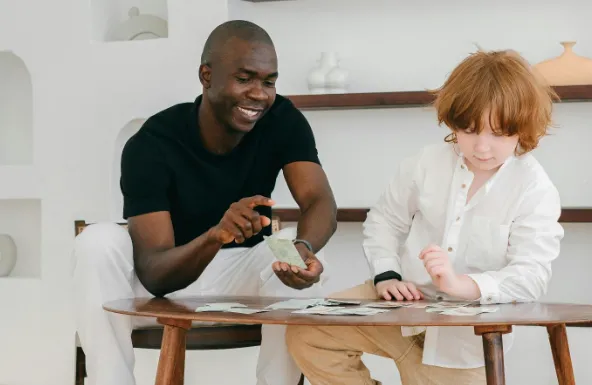Empowering Voices
- Therapy
- News

How SLPs Enhance Communication for Individuals with I/DD
May is National Speech-Language-Hearing Month, and there’s no better time to recognize the invaluable contributions of speech and language pathologists (SLPs) in enhancing communication skills. Among those greatly benefiting from the expertise of SLPs are individuals with intellectual or developmental disabilities (I/DD). SLPs play a pivotal role in helping these individuals overcome communication barriers and improve their quality of life.
Speech and language pathologists are highly trained professionals who assess, diagnose and treat speech, language, cognitive-communication and swallowing disorders. “We have multiple different parts of speech therapy, it’s not just speech related,” explained Hannah Howard, SLP at Boundless. And it’s not just help for stuttering.
The parts that most people know about are speech sounds and articulation or age-appropriate vocabulary. It’s also common to work on expressive language skills, like using vocabulary in sentences, as well as receptive language skills, or the ability to understand spoken or written language.
What many people don’t know about is that there can also be a focus on pragmatics, which is especially important for individuals with I/DD and autism, specifically. Pragmatics are the participatory or social parts of language, such as understanding turn-taking in conversations, understanding idioms or expressions and even interpreting non-verbal cues given in conversation. In speech therapy, this can look like practicing conversations with help and coaching from SLPs. So even though individuals might not be practicing sounds or articulation, they are practicing valuable skills that better their quality of life.
But at Boundless, there’s one more part, which Howard is most excited to work in. There is an augmentative and alternative communication (AAC) clinic available, where SLPs help patients to test out different modalities of communication. If there are barriers to communication, spoken language might not be a realistic goal for everyone. “They may benefit from a book with pictures or a speech device,” Howard explained. “We try to figure out what works best for the individual and then work with their insurance companies to get devices covered.”
And once they find the right device for an individual, Boundless SLPs like Howard provide ongoing support and education for both the parents and guardians as well as the individual themselves. She said, “It takes a lot of training and patience and time. It’s great that we are able to provide that service. We play a huge role in decreasing device abandonment.”
She also noted that decreasing device abandonment is a big goal in the AAC clinic. Many parents worry that by using an AAC device, their children will never speak or end up speaking less, but it’s actually the opposite, according to research. AAC devices can be a critical link for individuals who are non-speaking, and having ongoing support from the clinic and speech therapy can help them develop and use their voice.
Howard emphasized that, “Everybody has a right to have access to communication. Everyone should have access to communication, whether it’s a communication book, an AAC or language. It’s one of the most important aspects of life to just navigate life in general.” She added that many times, unwanted or negative behaviors, like acting out, can come from not being able to communicate what they’re feeling, whether that’s an emotion or a physical feeling like nausea or pain. “Just helping them find their voice can help them decrease their behaviors.”
It can also be the difference between needing 24-hour care and living independently because, as Howard put it, “We communicate for literally everything we do throughout the day. Having access to communication just betters someone’s overall lifestyle.”
Ultimately, SLPs like Howard make a huge difference in the lives of people with I/DD and communication barriers. And many times, they are there to watch kids grow up. For example, Howard mentioned one client who she started seeing when he was just two years old and had very few language skills. After three years of seeing him, he now consistently uses 300 words and is constantly expanding his vocabulary and language skills. Beyond being a critical part of their development, Howard said, “It’s just so cool to watch these kids grow up.”





